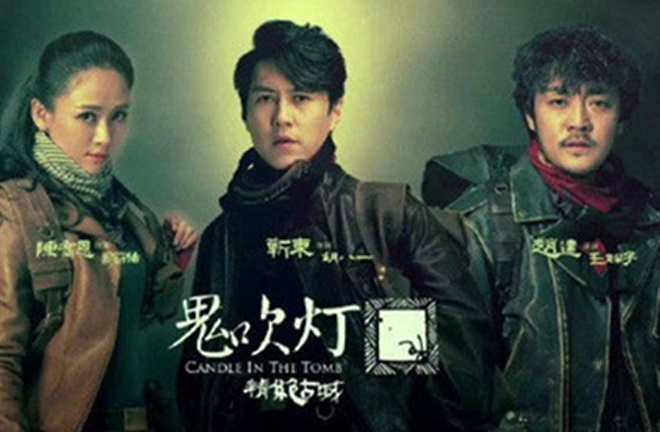Scholars discuss transformation of cultural sector

Pictured above is the poster for one of the hot online drama series Candle in the Tomb. In the internet era, China’s cultural industry has shown new trends.
During a recent high-end forum at Shandong University, participating scholars and experts discussed ways the cultural sector is being upgraded and transformed through innovations in investment and financing as well as new business models for cultural enterprises.
In the context of the “new era,” the cultural sector should achieve a breakthrough by establishing a new industrial environment and new development patterns based on knowledge, technology and talent. Pan Ailing, a professor from the School of Management at Shandong University, said that the domestic cultural sector is in its initial stage of development at which there is a mismatch between cultural resources and industrial capital. The sector also faces disadvantages like an incomplete industrial chain, immature business model and weak company competitiveness. She suggested overcoming three barriers in mergers and acquisitions caused by variations among regions, industries and forms of ownership, which could extend the industrial and value chain, promote a new cultural environment, and optimize the system of the cultural sector.
Chen Shaofeng, deputy director of the Institute of the Cultural Sector at Peking University, suggested that in the future, the domestic cultural sector should integrate industrial parks and capital, content and technology as well as traditions and the internet. He put forward 10 development patterns, including extension of the industrial chain, integration of culture and technology, and online-offline interactive activities.
China’s cultural sector has taken on new development tendencies in the era of the internet. Wei Pengju, director of the Department of Culture and Communication at Central University of Finance and Economics, summarized five forms of development. The internet has entered an era of commercialized content and the sector of internet copyright has emerged. The cultural sector’s innovation and its adaptation to upgraded consumption are signs of rapid growth. Also, a massive injection of internet capital has helped the television and film industry. The internet is driving the market for copyrights on cultural innovation products. In addition, the “internet plus” model of television and film industry is becoming prosperous, because the number of online television shows and films is increasing and the layout of online ticket platforms is accessible. Also, internet livestream video is booming and virtual reality technology is advancing, Wei said.
In the context of new media, the various forms of media that originated from digital technology are serving as an excellent platform for the operation and exploration of copyright, said Wei Jian, director of the Institute of Copyright at Shandong University. He proposed several alternative models for copyright protection based on interdependent and interest-balanced principles. He said the music sector could adopt a model that combines exclusive copyright and sublicense, and he recommended establishing competing collective management systems.
Fu Guangjun, a research fellow from the State Bureau of Taxation, said China has released a pack of favorable policies targeting the cultural sector by derating tax in recent years. He argued that these favorable measures mainly aim to stimulate cultural products and services, forming a support for the supply side. Currently, China’s cultural sector is still in its infancy. It requires continuous implementation of favorable tax policies targeting divisions of industry and establishment of incentive tax policies for consumption. Also, relevant departments should offer greater financial support for the cultural sector, Fu added.
The meeting was organized together by the Institute of Investment & Financing and the Institute of Copyright at Shandong University.
